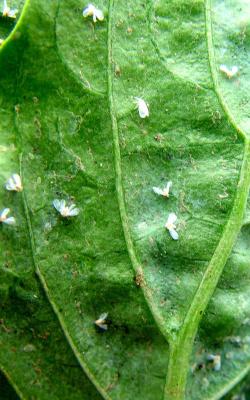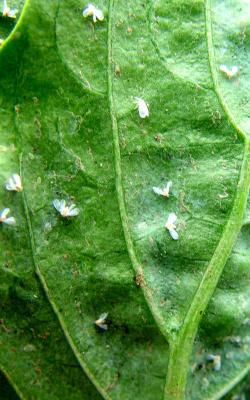Featured Photo

Other Photos

featured_photo_title
Whiteflies
feaured_photo_co
B. Nyambo, A. A. Seif, icipe
Is this a Minor Pest?
Yes
Minor Pest Title
Whiteflies (Bemisia tabaci, Trialeurodes vaporariorum)
Minor Pest Description
Whiteflies damage plants in three ways. Whitefly immature stages (nymphs) and adults suck sap from leaves. Their feeding, in addition to removing plant nutrients, produces chlorotic spots on infested leaves. Nymphs excrete a clear sugary liquid known as honeydew, which often completely covers the leaves during heavy infestation. Honeydew supports the growth of a black sooty mould, and as a result the leaves may turn black, affecting photosynthesis.
Whiteflies are vector of important viral diseases such as chilli leaf curl, tiger disease, Serrano golden mosaic, and Texas pepper geminivirus.
Minor Pest What to do.
- In areas where whitefly-transmitted viral diseases are a problem keep the seedlings protected under a fine meshed insect netting until they are ready for transplanting. Make sure the netting is always properly closed.
- Conserve natural enemies. Parasitic wasps, predatory mites, ladybird beetles, and lacewings are important natural enemies of whiteflies.
- Whenever necessary spray with neem products. Neem products inhibit growth and development of immature stages, repel whitefly adults and reduce egg laying.
Minor Pest Position
8
Minor Pest Firstcontent
119
Pest Type
insect
Host Plants
Peppers (Revised)
Featured Image
PH Pests Media Gallery
